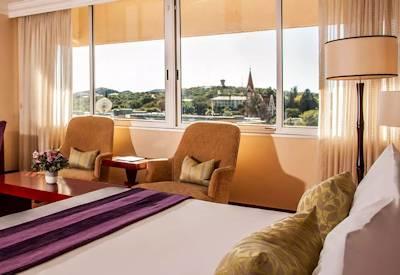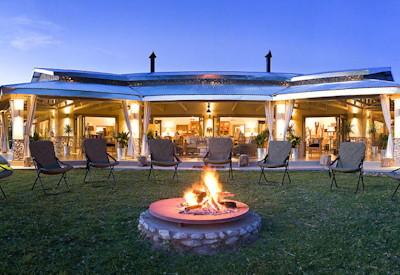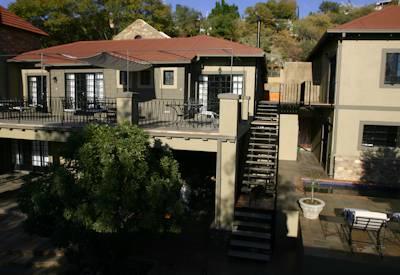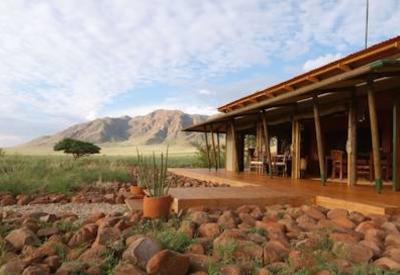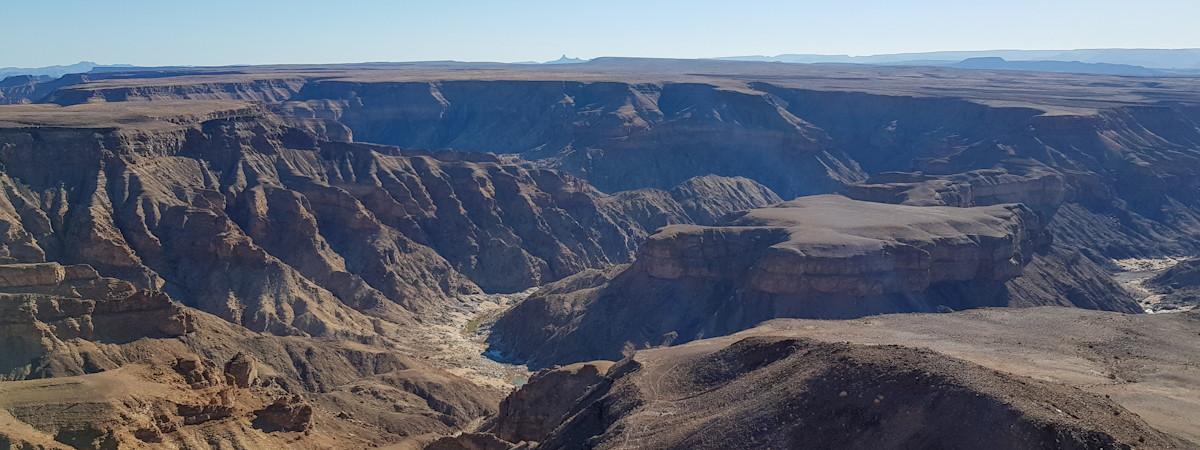
Fish River Canyon
Absolutely magnificent and breathtaking in its immensity, The Fish River Canyon in Namibia is the second largest canyon in the world. Formed by water from the Fish River flowing through an arid environment over millions of years, the landscape here is desolate, dusty and rock-strewn with enticing hills and chasms.
Fish River Canyon Facts
- Size: 160km long, up to 27km wide and up to 550m deep
- When to visit: Year-round
- Rainfall: Erratic, 10mm to 40mm per annum, varying with flash floods occurring often
- Altitude: varies from 366m to 609m above sea level
- Location: South-Eastern Namibia
- Accommodation: Lodges near Fish River Canyon
Information On Fish River Canyon
Absolutely magnificent and breathtaking in its immensity, The Fish River Canyon in Namibia is the second largest canyon in the world.
Formed by water from the Fish River flowing through an arid environment over millions of years, the landscape here is desolate, dusty and rock-strewn with enticing hills and chasms. It is surrounded by high, forbidding cliffs, and winds along a distance of approximately one hundred miles through the fissured Koubis Massif all the way down to the sulphurous Ai-Ais Hot Springs. The fantastic views of this majestic canyon make it a popular hiking destination, and there is a terrific 5 day, 86 km trek along the canyon floor.
After heavy rainfall, The Canyon quickly turns into a raging river although it usually carries only a small amount of water, being dammed up in the town of Hardap. The main viewpoint for the Canyon is at Hobas near the northern end of the canyon. The 60ºC sulphurous springs at Ais-Ais (from the Nama word meaning 'burning water') originate deep underground and are rich in minerals which are reputedly beneficial for those with rheumatic or nervous disorders. Ais-Ais falls within the Fish River Canyon conservation area, and the hot springs are a public facility.
The fantastic 5-day hike offers thrills to adventure seekers and travellers alike. Absolutely no facilities are provided, and you carry everything with you and find whatever water you can in semi-permanent pools. Due to the risk of flooding and the high summer temperatures, the hiking trail is only open from May 1st to August 31st.
Wildlife, while not as concentrated here as in other areas (such as Etosha and Caprivi), do include troops of Chacma baboons and isolated groups of klipspringers while mountain zebra and kudu are rare. The area attracts an interesting variety of colourful birds and raptors such as rock kestrels, and lanner falcons ride the thermals.
Where is Fish River Canyon located?
Located within the /Ai / Ais-Richtersveld Transfrontier Park (Namibia and South Africa), the canyon though is situated in the southeastern region of Namibia.
- Luderitz to Hobas = 418km
- Luderitz to Ais-Ais = 458km
- Sesriem to Hobas = 568km
- Sesriem to Ais-Ais = 630km
- Vioolsdrif (South Africa/Namibia border post) to Hobas = 168
- Vioolsdrif (South Africa/Namibia border post) to Ais-Ais = 121km
Here is a link to a map of the canyon; Google Maps - Fish River Canyon
Best Time to Visit Fish River Canyon?
One can visit the canyon year-round, although it must be noted that the summer months can be exceptionally hot, with temperatures in the late 30's and early 40's (degrees Celcius).
Winter mornings can be very cold, with temperatures dropping below zero (degrees Celcius).
If you are not affected by heat, look at the Fish River canyon as a year-round destination, but if you are looking to avoid the heat, look at the winter and autumn months (June to October).
Main Attractions Of Fish River Canyon
- The second-largest canyon in the World
- Stunning views, especially at sunrise and more so, sunset
- 86km Fish River Canyon hike
- Therapeutic hot springs at Ais-Ais
- Sunsets drinks at the viewpoint near Hobas
- Avani Windhoek Hotel
The Avani Windhoek Hotel is a tribute to these metaphors and is a stepping stone to Namibia and the gateway to Etosha National Park and the Namib Desert.
The Avani Windhoek Hotel Casino, 173 rooms, a rooftop swimming pool, sky lounge and all this located in the city centre of Windhoek, Namibia.
- Wolwedans Dune Camp
While Wolwedans Dune Camp aims to accommodate those guests in need of relaxed comfort and space, the camp is a more down-to-earth and close-to-nature experience. The camp sleeps a maximum of 12 guests in a perfect setting.
The spectacular NamibRand Nature Reserve awaits with thrilling game drives, breathtaking landscapes, and scenic wonders in every direction. From sprawling dunes to unique desert wildlife, this reserve offers an unforgettable experience for nature lovers and adventure seekers alike.
- Mushara Outpost
The Mushara Outpost lodge accommodates 16 guests in custom-made tent-like structures; each tent is set on a wooden deck, a metre and a half above the ground, giving us a different perspective of the surrounding Namibian bush.
Mushara, one of the best Etosha lodge options for romantics and honeymooners alike.
- Zambezi Mubala Lodge
Zambezi Mubala Lodge is one of Namibia's best-kept secrets with a Zambezi Riverfront setting, 450 species of bird and good fishing all on the doorstep.
The perfect base from which to explore all that surrounds or simply sit back and relax in the lap of luxury.
- Olive Grove Guesthouse
The Olive Grove Guesthouse and boutique hotel in Windhoek is a small, upmarket accommodation establishment situated close to the Windhoek city centre in a quiet and peaceful suburb.
Olive Grove offers guests; free Wi-Fi and an outdoor pool and is within an easy walk of Joe's Beer Garden
- Wolwedans Private Camp
Wolwedans Private Camp offers two spacious en-suite bedrooms, a 'Sala' where one can laze away siestas, various decks, and the central lounge, combining a study, living room, a dining area, and a fully equipped kitchen.

